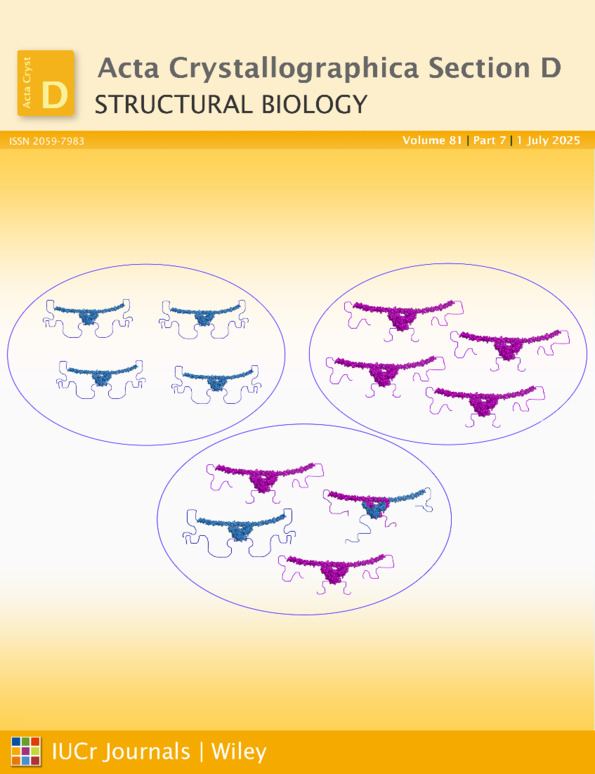Escherichia coli MltA: MAD phasing and refinement of a tetartohedrally twinned protein crystal structure
Abstract
Crystals were grown of a mutant form of the bacterial cell-wall maintenance protein MltA that diffracted to 2.15 Å resolution. When phasing with molecular replacement using the native structure failed, selenium MAD was used to obtain initial phases. However, after MAD phasing the crystals were found to be tetartohedrally twinned, hampering correct space-group determination and refinement. A refinement protocol was designed to take tetartohedral twinning into account and was successfully applied to refine the structure. The refinement protocol is described and the reasons for the failure of molecular replacement and the success of MAD are discussed in terms of the effects of the tetartohedral twinning.




